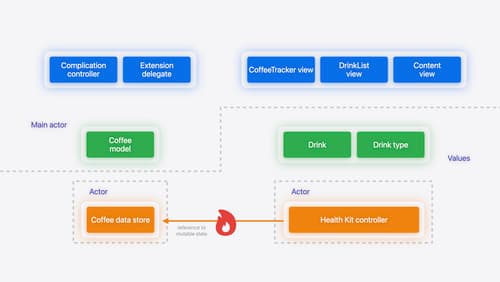Explain async await to a simple brain
Asked on 2024-07-30
1 search
Async/await is a feature in Swift that helps manage asynchronous operations in a more readable and maintainable way. Here’s a simple explanation:
-
Asynchronous Operations: These are tasks that can take some time to complete, like reading from a disk or fetching data from a network. Instead of making your program wait and do nothing until these tasks are done, async/await allows your program to continue doing other work.
-
Async Functions: A function that can perform asynchronous operations is marked with the
asynckeyword. This tells Swift that the function might need to pause and wait for some operations to complete. -
Await Keyword: When you call an async function, you use the
awaitkeyword. This indicates that the function might pause at this point to wait for the asynchronous operation to finish. While it’s waiting, other tasks can use the CPU, making your program more efficient.
For example, if you have a function that fetches data from the internet, you would mark it as async and use await when calling it:
func fetchData() async -> Data {
// Simulate a network call
let data = await networkRequest()
return data
}
When fetchData is called, it might pause at await networkRequest() until the network request is complete, allowing other parts of your program to run in the meantime.
For more details, you can refer to the session A Swift Tour: Explore Swift’s features and design which covers the basics of async/await in Swift.

Explore Swift performance
Discover how Swift balances abstraction and performance. Learn what elements of performance to consider and how the Swift optimizer affects them. Explore the different features of Swift and how they’re implemented to further understand the tradeoffs available that can impact performance.

Migrate your app to Swift 6
Experience Swift 6 migration in action as we update an existing sample app. Learn how to migrate incrementally, module by module, and how the compiler helps you identify code that’s at risk of data races. Discover different techniques for ensuring clear isolation boundaries and eliminating concurrent access to shared mutable state.

A Swift Tour: Explore Swift’s features and design
Learn the essential features and design philosophy of the Swift programming language. We’ll explore how to model data, handle errors, use protocols, write concurrent code, and more while building up a Swift package that has a library, an HTTP server, and a command line client. Whether you’re just beginning your Swift journey or have been with us from the start, this talk will help you get the most out of the language.
